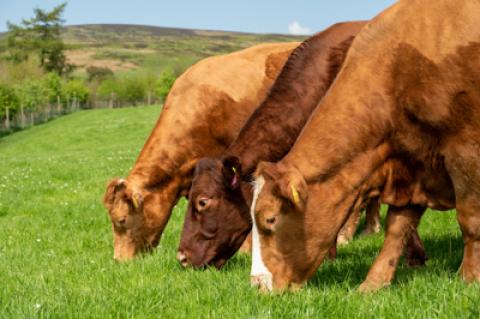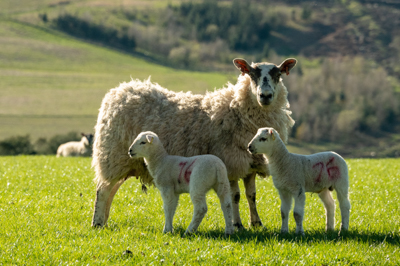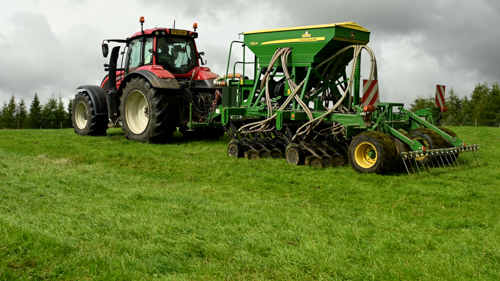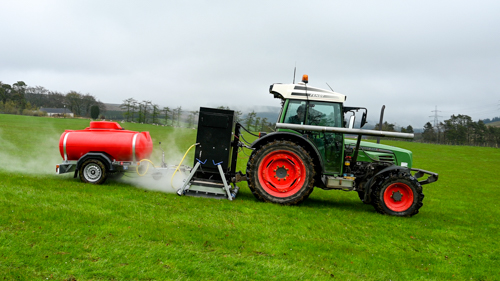
This research is investigating how innovative grassland management, combining plant species diversification with rotational grazing, can reduce GHG emissions and produce multiple benefits for livestock, biodiversity and climate resilience.
Diverse grassland systems can be both more productive and more resilient. This research project uses direct drilling to enhance grassland sward diversity with minimal soil disturbance, in combination with rotational / mob grazing, to improve sward quality, soil health, pollinator resources, livestock health and productivity. This approach aims to reduce GHG emissions and produce a more climate-resilient, biodiverse, low-input, low-disturbance grazing management system directly contributing to net-zero targets.
Benefits of better Grassland Management

grazing
Transition to more diverse grassland systems can improve carbon storage and biodiversity in soils and vegetation, resilience to climate extremes, reduce GHG emissions from livestock through improved diet and health, and more..
Pasture is 'traditionally' improved by ploughing and harrowing (plus or minus treating with herbicides) then sowing with 'improved grassland' species mixtures dominated by perennial ryegrass and clover. These species are highly productive with appropriate fertiliser inputs. However, there are many concerns about this approach and there is a strong push to explore viable alternatives that protect soils, reduce the need for inputs and confer greater resilience to increasing climate extremes.

Direct-drilling offers a compelling alternative to the resource-intensive and environmentally damaging cycles of ploughing and reseeding grasslands. Direct drilling has the advantage of causing minimal disruption to mature soil structure, maintains good soil microbial and biotic populations including mycorrhizae and earthworms. But establishment into 'live' existing swards is much more challenging. We are investigating options for promoting establishment whilst minimising disturbance.
Opportunities for innovation include:

established sward, helping drilled seed to establish
• Designing plant species mixtures that confer a suite of benefits – carbon sequestration, nutrient and water utilisation efficiency, resilience to extreme weather, anthelmintic (anti parasitic worms) properties, pollinator resources, complementary rooting types, and more…
• Trialling technological advances in machinery and methods that minimise soil disturbance but help new seedling establishment without the need for herbicides…
• Exploring how species mixtures combined with rotational/mob grazing can best support species establishment and persistence, livestock productivity and health – this includes efficient sward utilisation, maintenance of forage quality, and breaking of parasite lifecycles through careful timing of grazing/rest cycles.
There are well established benefits of using native species for low-input grazing systems and this is a priority in our species selection.
This experiment investigates questions complementary to the ‘Sward diversification, biodiversity and forage quality’ project.
Working in partnership
Our current project, GREENgrass, combines the expertise of the James Hutton Institute and the Moredun Research Institute to investigate experimentally how innovative grassland management can reduce GHG emissions and produce multiple benefits for livestock, biodiversity and climate resilience.
The Hutton's work on this GREENgrass project (2022-25) is funded by the Macaulay Development Trust; the Moredun’s collaborative work on this project is funded by the Scottish Government’s RESAS research programme.
Outputs:
You can watch a video about the GREENgrass project, showing some of the experimental techniques in action, here.
A leaflet giving information on the GREENgrass project is available here
Contact
Stuart Smith: staff page email
